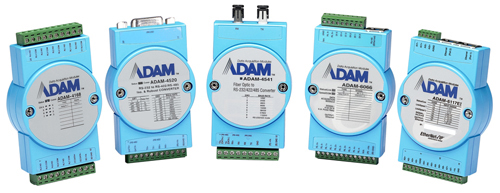In Part I and Part II of Selecting the Correct Advantech Remote I/O Module, I addressed Determining Physical Interface and Supported Protocols. In Part III, I will cover Analog/Digital, Input/Out and Number of Channels. It’s important to address these areas so that there is no discrepancy in the differences between Analog and Digital, the Input and Output Channels Provided and the total Number of Channels available.
Selecting the Correct Advantech Remote I/O Module
Tip 3: Analog/Digital
I decided to address the difference between Analog and Digital I/O, so that those not familiar with both methods of transmission would have a little more familiarity. This will enable you to analyze external I/O you want to communicate with, along with the method that will be required to do so.
- Analog values are available from various sources such as Thermistor, Thermocouple, RTD and Analog signals. Analog describes data containing a continuous value between set limits represented by a range/span of voltage, current or resistance, such as 4-20 mA DC or 0 to 5 V DC. The value is non-integer with a specified number of digits limited by measurement. Some examples of an Analog signal are pressure, temperature and flow rate.
- Digital I/O is a discrete signal utilized to control high/low, open/closed and on/off commands. Digital I/O is easier for Data Acquisition systems to handle than Analog values due to the binary language it utilizes. Some examples of Digital Input signals are switch closures, relay contacts, hardware triggers. Digital Outputs provide an ability to control the on/off of controls, relays, data transmission, alarms, signals, solenoids, etc.
Tip 4: Input/Output
This is a rather easy subject compared to Analog and Digital values.
- When it comes to Input devices, we are talking about a piece (or pieces) of hardware with the ability to accept processed data and deliver it to a PC, Programmable Automation Controller (PAC), Programmable Logic Controller (PLC) or Human Machine Interface (HMI).
- When referring to output, it’s the method by which a device provides a physical method for a PC/PAC/PLC/HMI to output data to be communicated with other PC/PAC/PLC/HMI units.
Tip 5: Number of Channels
Just in case you were curious, I wanted to address how many Analog and Digital I/O channels are available. Please keep in mind that no specific module will provide the maximum of each value. This is just the overall maximum provided. In addition, some of these modules are also available with Relay, RTD, PID Loop Control, Isolation and Counters.
- The ADAM-4000 series includes modules capable of providing up to 8 Analog Input and 4 Analog Output channels. When it comes to Digital, they can support up to 16 Digital Input or 12 Digital Output channels.
- The ADAM-6000 modules can support up to 8 Analog Input and 6 Analog Output channels, while some of them can support up to 12 Digital Input and 8 Digital Output Channels.
That’s going to wrap up Part III of Five Tips for Selecting the Correct Advantech Remote I/O Module. It is always a goal of mine to educate the user base on what I feel are the important variables to consider when selection the appropriate device for your application. Hopefully, the information provided will make it easier for you to do so moving forward, but as always, please feel free to contact me for additional assistance.
Questions?
Call 800-830-9523 or
Email info@L-Tron.com
